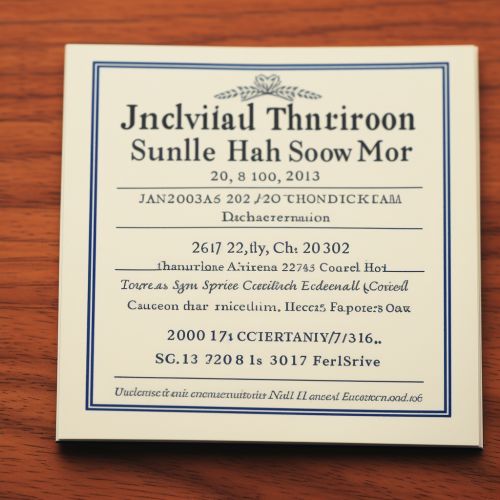Pharmacogenomics
Introduction
Pharmacogenomics is a branch of genomics that studies how genes affect a person's response to drugs. This relatively new field combines pharmacology (the science of drugs) and genomics (the study of genes and their functions) to develop effective, safe medications and doses that will be tailored to a person's genetic makeup. Many drugs that are currently available are "one size fits all," but they don't work the same way for everyone. It can be difficult to predict who will benefit from a medication, who will not respond at all, and who will experience negative side effects (called adverse drug reactions). Pharmacogenomics aims to develop rational means to optimize drug therapy, with respect to the patients' genotype, to ensure maximum efficacy with minimal adverse effects[1].


History of Pharmacogenomics
The term "pharmacogenomics" was first coined in the late 1990s, but the concept has been around for much longer. In the 1950s, researchers began to understand that individual genetic variations could influence the body's response to drugs. This led to the development of the field of pharmacogenetics, which is the study of how individual genes affect drug response. Pharmacogenomics, a broader term, refers to the study of all genes that can influence drug response.
The field of pharmacogenomics has grown rapidly in the past two decades, thanks in part to advances in genetic sequencing technologies. These advances have made it possible to sequence a person's entire genome quickly and inexpensively, opening up new possibilities for personalized medicine[2].


Principles of Pharmacogenomics
Pharmacogenomics is based on the principle that variations in genes can affect the way drugs are absorbed, distributed, metabolized, or excreted by the body. These variations can also affect the way a drug interacts with its target in the body. By understanding these genetic variations, scientists can predict how a person will respond to a drug and can design drugs that are more effective and safer.
The human genome contains approximately 20,000 to 25,000 genes, and many of these genes can influence drug response. Some of the most important genes in pharmacogenomics are those that encode drug-metabolizing enzymes, drug transporters, and drug targets. Variations in these genes can lead to differences in drug response among individuals[3].
Applications of Pharmacogenomics
Pharmacogenomics has the potential to revolutionize the field of medicine by enabling the development of personalized drug therapies. By understanding a person's genetic makeup, doctors can prescribe the right drug at the right dose at the right time, reducing the risk of adverse drug reactions and increasing the effectiveness of treatment.
One of the most successful applications of pharmacogenomics to date is in the treatment of certain types of cancer. For example, the drug imatinib (Gleevec) is used to treat chronic myeloid leukemia (CML), a type of cancer that affects the blood and bone marrow. Imatinib works by inhibiting a protein that is overactive in CML cells. However, not all patients respond to imatinib, and some develop resistance to the drug. Researchers have found that genetic variations can predict which patients will respond to imatinib and which will develop resistance, leading to more personalized treatment strategies[4].


Challenges and Future Directions
Despite the promise of pharmacogenomics, there are several challenges that must be overcome before personalized drug therapies can become a reality for all patients. One of the biggest challenges is the complexity of the human genome. Each person's genome is unique, and there are millions of potential genetic variations that could affect drug response. Understanding the effects of these variations is a monumental task that will require further research and the development of new computational tools.
Another challenge is the need for clinical trials to validate the effectiveness of pharmacogenomic tests. These trials are expensive and time-consuming, and it can be difficult to recruit enough participants to obtain statistically significant results. Despite these challenges, the field of pharmacogenomics is advancing rapidly, and it is likely that personalized drug therapies will become increasingly common in the future[5].
See Also
References
- ↑ == Overview ==
A "Cite journal" template is a predefined format used in academic and scientific writing to provide a consistent method of citing sources from journal articles. The template is designed to ensure that all necessary information is included and presented in a standard format, making it easier for readers to locate the original source of the information. This template is widely used in Wikipedia and other online encyclopedias to maintain a high level of academic integrity and to adhere to the principles of citation and avoiding plagiarism.
Usage
The "Cite journal" template is used by inserting the template code into the text of an article at the point where the citation is required. The template code includes various fields that need to be filled in with the details of the journal article being cited. These fields include the author(s), title of the article, title of the journal, volume and issue number, publication date, page numbers, and DOI (Digital Object Identifier) if available.

A close-up view of a journal article citation in a bibliography. The citation includes the author's name, the title of the article, the name of the journal, the volume and issue number, the year of publication, and the page numbers. 
A close-up view of a journal article citation in a bibliography. The citation includes the author's name, the title of the article, the name of the journal, the volume and issue number, the year of publication, and the page numbers. Fields
The "Cite journal" template includes several fields that are used to provide detailed information about the journal article being cited. These fields are:
- Author: The name(s) of the author(s) of the journal article. This field is mandatory.
- Title: The title of the journal article. This field is mandatory.
- Journal: The name of the journal in which the article was published. This field is mandatory.
- Volume: The volume number of the journal in which the article was published.
- Issue: The issue number of the journal in which the article was published.
- Pages: The page numbers of the article in the journal.
- Year: The year in which the article was published. This field is mandatory.
- DOI: The Digital Object Identifier of the article, if available. This is a unique alphanumeric string assigned to a digital object, such as a research report or a journal article, to provide a persistent link to its location on the internet.
Benefits
The use of the "Cite journal" template offers several benefits. It ensures that all necessary information about a source is included in a citation, which helps readers to locate the original source of the information. The template also provides a consistent format for citations, which makes it easier for readers to understand the citation and for editors to check the accuracy of the citation. Furthermore, the use of the template helps to maintain the credibility and integrity of the article by demonstrating that the information has been sourced from reputable and reliable sources.
Limitations
While the "Cite journal" template is a valuable tool for citing journal articles, it does have some limitations. The template may not be suitable for citing sources that are not journal articles, such as books, websites, or personal communications. In these cases, other citation templates may be more appropriate. Additionally, the template requires detailed information about the source, which may not always be readily available. Finally, the use of the template requires a certain level of technical knowledge and familiarity with the template code, which may be a barrier for some users.
See Also
- ↑ == Overview ==
A "Cite journal" template is a predefined format used in academic and scientific writing to provide a consistent method of citing sources from journal articles. The template is designed to ensure that all necessary information is included and presented in a standard format, making it easier for readers to locate the original source of the information. This template is widely used in Wikipedia and other online encyclopedias to maintain a high level of academic integrity and to adhere to the principles of citation and avoiding plagiarism.
Usage
The "Cite journal" template is used by inserting the template code into the text of an article at the point where the citation is required. The template code includes various fields that need to be filled in with the details of the journal article being cited. These fields include the author(s), title of the article, title of the journal, volume and issue number, publication date, page numbers, and DOI (Digital Object Identifier) if available.

A close-up view of a journal article citation in a bibliography. The citation includes the author's name, the title of the article, the name of the journal, the volume and issue number, the year of publication, and the page numbers. 
A close-up view of a journal article citation in a bibliography. The citation includes the author's name, the title of the article, the name of the journal, the volume and issue number, the year of publication, and the page numbers. Fields
The "Cite journal" template includes several fields that are used to provide detailed information about the journal article being cited. These fields are:
- Author: The name(s) of the author(s) of the journal article. This field is mandatory.
- Title: The title of the journal article. This field is mandatory.
- Journal: The name of the journal in which the article was published. This field is mandatory.
- Volume: The volume number of the journal in which the article was published.
- Issue: The issue number of the journal in which the article was published.
- Pages: The page numbers of the article in the journal.
- Year: The year in which the article was published. This field is mandatory.
- DOI: The Digital Object Identifier of the article, if available. This is a unique alphanumeric string assigned to a digital object, such as a research report or a journal article, to provide a persistent link to its location on the internet.
Benefits
The use of the "Cite journal" template offers several benefits. It ensures that all necessary information about a source is included in a citation, which helps readers to locate the original source of the information. The template also provides a consistent format for citations, which makes it easier for readers to understand the citation and for editors to check the accuracy of the citation. Furthermore, the use of the template helps to maintain the credibility and integrity of the article by demonstrating that the information has been sourced from reputable and reliable sources.
Limitations
While the "Cite journal" template is a valuable tool for citing journal articles, it does have some limitations. The template may not be suitable for citing sources that are not journal articles, such as books, websites, or personal communications. In these cases, other citation templates may be more appropriate. Additionally, the template requires detailed information about the source, which may not always be readily available. Finally, the use of the template requires a certain level of technical knowledge and familiarity with the template code, which may be a barrier for some users.
See Also
- ↑ == Overview ==
A "Cite journal" template is a predefined format used in academic and scientific writing to provide a consistent method of citing sources from journal articles. The template is designed to ensure that all necessary information is included and presented in a standard format, making it easier for readers to locate the original source of the information. This template is widely used in Wikipedia and other online encyclopedias to maintain a high level of academic integrity and to adhere to the principles of citation and avoiding plagiarism.
Usage
The "Cite journal" template is used by inserting the template code into the text of an article at the point where the citation is required. The template code includes various fields that need to be filled in with the details of the journal article being cited. These fields include the author(s), title of the article, title of the journal, volume and issue number, publication date, page numbers, and DOI (Digital Object Identifier) if available.

A close-up view of a journal article citation in a bibliography. The citation includes the author's name, the title of the article, the name of the journal, the volume and issue number, the year of publication, and the page numbers. 
A close-up view of a journal article citation in a bibliography. The citation includes the author's name, the title of the article, the name of the journal, the volume and issue number, the year of publication, and the page numbers. Fields
The "Cite journal" template includes several fields that are used to provide detailed information about the journal article being cited. These fields are:
- Author: The name(s) of the author(s) of the journal article. This field is mandatory.
- Title: The title of the journal article. This field is mandatory.
- Journal: The name of the journal in which the article was published. This field is mandatory.
- Volume: The volume number of the journal in which the article was published.
- Issue: The issue number of the journal in which the article was published.
- Pages: The page numbers of the article in the journal.
- Year: The year in which the article was published. This field is mandatory.
- DOI: The Digital Object Identifier of the article, if available. This is a unique alphanumeric string assigned to a digital object, such as a research report or a journal article, to provide a persistent link to its location on the internet.
Benefits
The use of the "Cite journal" template offers several benefits. It ensures that all necessary information about a source is included in a citation, which helps readers to locate the original source of the information. The template also provides a consistent format for citations, which makes it easier for readers to understand the citation and for editors to check the accuracy of the citation. Furthermore, the use of the template helps to maintain the credibility and integrity of the article by demonstrating that the information has been sourced from reputable and reliable sources.
Limitations
While the "Cite journal" template is a valuable tool for citing journal articles, it does have some limitations. The template may not be suitable for citing sources that are not journal articles, such as books, websites, or personal communications. In these cases, other citation templates may be more appropriate. Additionally, the template requires detailed information about the source, which may not always be readily available. Finally, the use of the template requires a certain level of technical knowledge and familiarity with the template code, which may be a barrier for some users.
See Also
- ↑ == Overview ==
A "Cite journal" template is a predefined format used in academic and scientific writing to provide a consistent method of citing sources from journal articles. The template is designed to ensure that all necessary information is included and presented in a standard format, making it easier for readers to locate the original source of the information. This template is widely used in Wikipedia and other online encyclopedias to maintain a high level of academic integrity and to adhere to the principles of citation and avoiding plagiarism.
Usage
The "Cite journal" template is used by inserting the template code into the text of an article at the point where the citation is required. The template code includes various fields that need to be filled in with the details of the journal article being cited. These fields include the author(s), title of the article, title of the journal, volume and issue number, publication date, page numbers, and DOI (Digital Object Identifier) if available.

A close-up view of a journal article citation in a bibliography. The citation includes the author's name, the title of the article, the name of the journal, the volume and issue number, the year of publication, and the page numbers. 
A close-up view of a journal article citation in a bibliography. The citation includes the author's name, the title of the article, the name of the journal, the volume and issue number, the year of publication, and the page numbers. Fields
The "Cite journal" template includes several fields that are used to provide detailed information about the journal article being cited. These fields are:
- Author: The name(s) of the author(s) of the journal article. This field is mandatory.
- Title: The title of the journal article. This field is mandatory.
- Journal: The name of the journal in which the article was published. This field is mandatory.
- Volume: The volume number of the journal in which the article was published.
- Issue: The issue number of the journal in which the article was published.
- Pages: The page numbers of the article in the journal.
- Year: The year in which the article was published. This field is mandatory.
- DOI: The Digital Object Identifier of the article, if available. This is a unique alphanumeric string assigned to a digital object, such as a research report or a journal article, to provide a persistent link to its location on the internet.
Benefits
The use of the "Cite journal" template offers several benefits. It ensures that all necessary information about a source is included in a citation, which helps readers to locate the original source of the information. The template also provides a consistent format for citations, which makes it easier for readers to understand the citation and for editors to check the accuracy of the citation. Furthermore, the use of the template helps to maintain the credibility and integrity of the article by demonstrating that the information has been sourced from reputable and reliable sources.
Limitations
While the "Cite journal" template is a valuable tool for citing journal articles, it does have some limitations. The template may not be suitable for citing sources that are not journal articles, such as books, websites, or personal communications. In these cases, other citation templates may be more appropriate. Additionally, the template requires detailed information about the source, which may not always be readily available. Finally, the use of the template requires a certain level of technical knowledge and familiarity with the template code, which may be a barrier for some users.
See Also
- ↑ == Overview ==
A "Cite journal" template is a predefined format used in academic and scientific writing to provide a consistent method of citing sources from journal articles. The template is designed to ensure that all necessary information is included and presented in a standard format, making it easier for readers to locate the original source of the information. This template is widely used in Wikipedia and other online encyclopedias to maintain a high level of academic integrity and to adhere to the principles of citation and avoiding plagiarism.
Usage
The "Cite journal" template is used by inserting the template code into the text of an article at the point where the citation is required. The template code includes various fields that need to be filled in with the details of the journal article being cited. These fields include the author(s), title of the article, title of the journal, volume and issue number, publication date, page numbers, and DOI (Digital Object Identifier) if available.

A close-up view of a journal article citation in a bibliography. The citation includes the author's name, the title of the article, the name of the journal, the volume and issue number, the year of publication, and the page numbers. 
A close-up view of a journal article citation in a bibliography. The citation includes the author's name, the title of the article, the name of the journal, the volume and issue number, the year of publication, and the page numbers. Fields
The "Cite journal" template includes several fields that are used to provide detailed information about the journal article being cited. These fields are:
- Author: The name(s) of the author(s) of the journal article. This field is mandatory.
- Title: The title of the journal article. This field is mandatory.
- Journal: The name of the journal in which the article was published. This field is mandatory.
- Volume: The volume number of the journal in which the article was published.
- Issue: The issue number of the journal in which the article was published.
- Pages: The page numbers of the article in the journal.
- Year: The year in which the article was published. This field is mandatory.
- DOI: The Digital Object Identifier of the article, if available. This is a unique alphanumeric string assigned to a digital object, such as a research report or a journal article, to provide a persistent link to its location on the internet.
Benefits
The use of the "Cite journal" template offers several benefits. It ensures that all necessary information about a source is included in a citation, which helps readers to locate the original source of the information. The template also provides a consistent format for citations, which makes it easier for readers to understand the citation and for editors to check the accuracy of the citation. Furthermore, the use of the template helps to maintain the credibility and integrity of the article by demonstrating that the information has been sourced from reputable and reliable sources.
Limitations
While the "Cite journal" template is a valuable tool for citing journal articles, it does have some limitations. The template may not be suitable for citing sources that are not journal articles, such as books, websites, or personal communications. In these cases, other citation templates may be more appropriate. Additionally, the template requires detailed information about the source, which may not always be readily available. Finally, the use of the template requires a certain level of technical knowledge and familiarity with the template code, which may be a barrier for some users.
See Also
